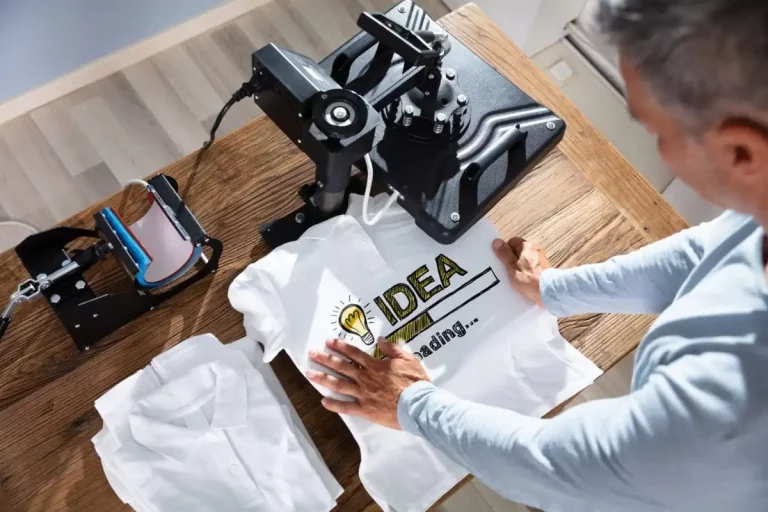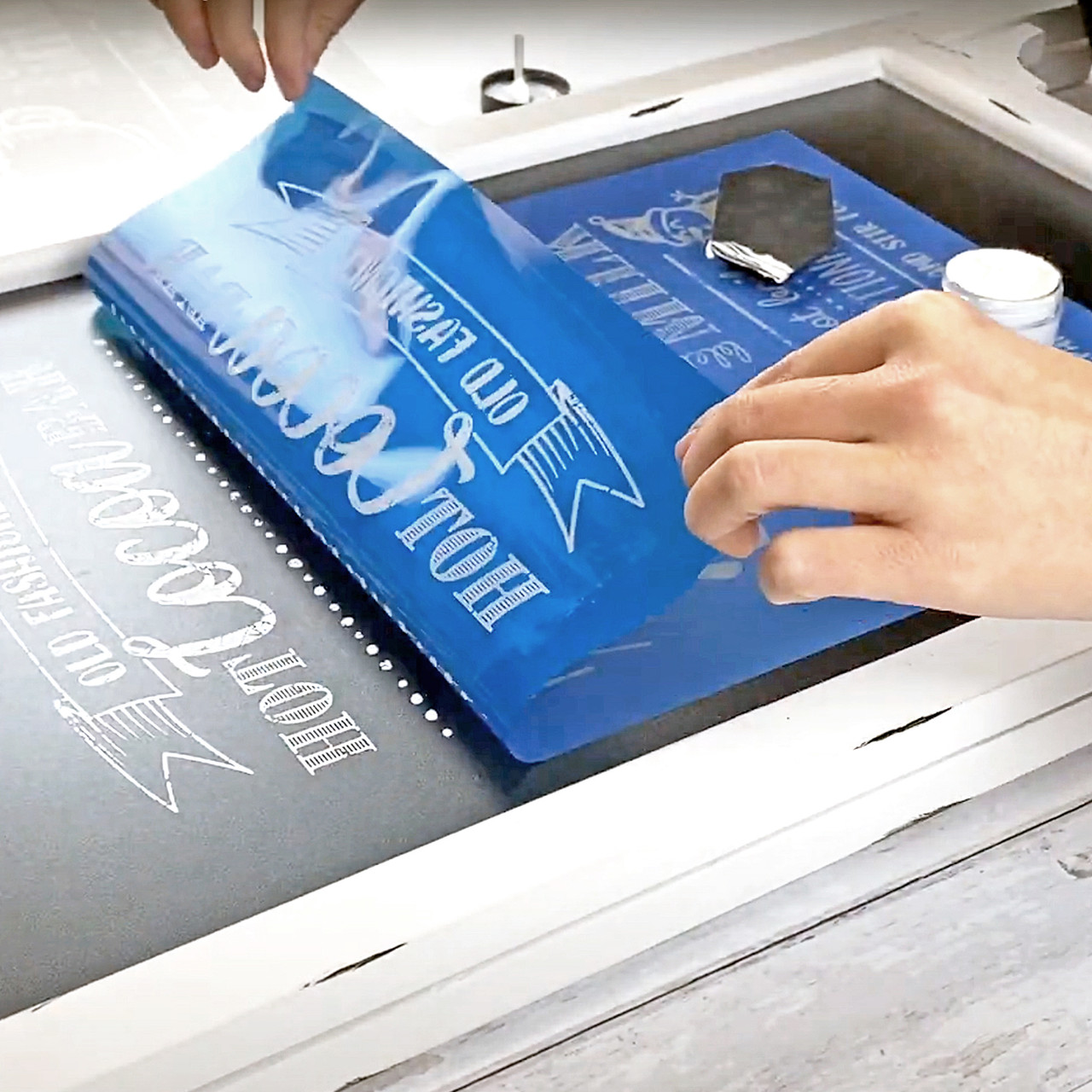Fast Turnaround Custom Screen Printing for Events
Fast Turnaround Custom Screen Printing for Events
Blog Article
Understanding Silk Screen Printing: Advice for Creating Stunning Designs
If you're looking to grasp silk display printing, you'll need more than simply interest. It requires a solid understanding of techniques, the right tools, and precise prep work. You'll discover exactly how to prepare your artwork and take on common concerns that can emerge throughout the procedure. By the end, you'll be all set to create magnificent layouts that mirror your distinct design. However first, let's discover the crucial fundamentals that lay the foundation for your success.
Understanding the Fundamentals of Silk Display Printing
Silk display printing, usually called display printing, is a functional method for moving designs onto different products. You'll find it's excellent for printing on textiles, paper, plastic, and extra. The process entails developing a stencil, or display, that permits ink to pass via only in details locations, creating clean and lively designs.
To begin, you'll need to prepare your art work, guaranteeing it remains in a suitable style. screen printing kit. As soon as you have actually got your design ready, you'll layer your screen with a light-sensitive emulsion and expose it to light. This step produces a stencil of your style on the display
After rinsing the unexposed emulsion, you're readied to publish. Align your display over your material, apply ink, and make use of a squeegee to press the ink through the screen. It's all about practice and perseverance, so do not be reluctant to experiment and refine your strategy as you go.
Important Tools and Products You'll Need
To get going with silk screen printing, you'll need a few basic materials like screens, mops, and ink. Once you fit, you can check out innovative devices that improves your printing high quality and performance. Let's go over what you'll call for to assure your projects succeed from the beginning.
Basic Silk Display Products
Beginning on a silk screen printing job needs a few crucial tools and products to guarantee your success. You'll need a silk display framework, which holds the mesh that transfers your design. A squeegee is important for pressing ink via the display onto your substrate.
Advanced Printing Equipment
When you prepare to take your silk display printing to the next level, purchasing sophisticated printing equipment can make a substantial distinction. A premium screen printing press is important; appearance for a multi-color press that enables exact registration and quicker manufacturing. You'll also wish to upgrade to a much more effective exposure device to assure your styles are sharp and dynamic.
Take into consideration spending in a dependable warmth resource, like a conveyor clothes dryer, for also curing of inks. Do not ignore specialized inks; water-based and discharge inks give exceptional outcomes on various fabrics. Ultimately, an excellent collection of squeegees and solution scoop coater will certainly enhance your procedure, providing your designs that professional edge.
Preparing Your Artwork for Printing
Preparing your artwork for silk screen printing is vital to attaining vibrant, expert results. Beginning by verifying your design is in the ideal format-- vector files like.AI or.EPS job best.
Once your file is prepared, create a separate layer for every color in your design. This'll make it much easier during the printing process. Do not forget to add registration marks to align shades correctly.
Likewise, consider the mesh matter of your screen; finer details might call for a higher mesh count. Save your art work with a resolution of at least 300 DPI to ensure crisp prints. By adhering to these steps, you'll establish on your own up for a successful printing experience and bring your layouts to life perfectly.
The Screen Printing Process: Step-by-Step
Currently that you have actually prepared your artwork, it's time to concentrate on the display printing procedure itself. You'll begin by preparing your screen, ensuring it's all set for the ink application. From there, you'll discover different printing strategies to attain the most effective results for your project.
Preparing Your Screen
Obtaining your screen all set is an important step in the silk screen printing procedure. When completely dry, place your transparency on the screen and utilize a light resource to expose the style. After exposure, wash out the unexposed emulsion, and you'll have your display prepared for printing.
Printing Strategies Clarified
As soon as your display prepares, you can plunge into the interesting procedure of printing. Initially, place your display on your substrate-- whether it's textile, paper, or an additional material. Safeguard it to prevent any kind of activity. Next, put your ink onto one side of the display and make use of a squeegee to draw the ink across the style. Apply also pressure to ensure the ink penetrates through the mesh. Lift the screen meticulously to disclose your print. If you're layering colors, let each layer completely dry before using the following. Tidy your screen immediately to stop ink from clogging the mesh and drying. With practice, you'll grasp the nuances of pressure and timing, which will certainly aid you accomplish crisp, dynamic layouts.
Tips for Achieving Vibrant Color Styles
While accomplishing dynamic colors in silk display printing may appear difficult, you can conveniently raise your styles with a few crucial methods. Initially, choose high-grade inks specifically made for silk display printing; they supply far better coloring and protection. Blending inks appropriately can also enhance vibrancy-- explore ratios to locate the excellent blend that stands out.

Finally, do not fail to remember concerning curing your prints correctly. Appropriate heat establishing assurances the colors bond with the textile, preserving their vibrancy gradually. By implementing these strategies, you'll create spectacular, attractive styles that genuinely shine.
Fixing Typical Printing Concerns
Despite having vibrant colors in your designs, silk screen printing can occasionally offer difficulties. One typical issue is ink bleeding, which frequently takes place when you use excessive ink or do not allow the previous layer dry completely. To avoid this, utilize a squeegee with just the right pressure and ensure each layer is dry before including a lot more.
Another problem is misalignment. If your layout isn't aligning appropriately, confirm your enrollment marks and make adjustments to your displays. In addition, if you see an absence of detail, it may be due to a blocked screen. Tidy your screens extensively before starting your print run.
Finally, if the ink isn't adhering well to the textile, take into consideration the fabric kind and the treating procedure. Make certain you're making use of the best ink and that you're curing it at the proper temperature. Troubleshooting these typical concerns will certainly assist you accomplish stunning results.
Exploring With Methods and Impacts
Trying out different techniques and results can elevate your silk screen printing projects to new elevations. Don't hesitate to press limits! Try layering shades for deepness; overlapping colors develops unique blends that stand out. You can also have fun with appearances-- utilizing different squeegee strategies or including materials like sponges or brushes includes measurement to your prints.
Take into consideration using specialty inks, such as metal or glow-in-the-dark, to provide your styles an unforeseen twist. You could even explore stenciling, where you can cut complex designs for stunning effects.
Do not forget substratum variants! Printing on textiles, wood, or paper can produce different outcomes that improve your project's feel.
Finally, keep a journal of your experiments. Documenting your failures and successes will lead your future developments and assist you refine your style. Welcome the procedure, and take pleasure in the journey of discovering what works best for you!
Often Asked Inquiries
Exactly how Do I Tidy and Keep My Display Printing Equipment?
To clean up and keep your screen printing tools, frequently scrub displays with an appropriate cleaner, laundry mops after usage, and store whatever in a completely dry, dust-free setting. Maintaining things tidy warranties much better prints and longer-lasting devices.

Can I Print on Products Aside From Textile?
Yes, you can publish on materials various other than textile! Think check these guys out about utilizing wood, paper, or plastic. Just make sure your inks and screens are compatible with those surfaces for the very best results. Experiment and have enjoyable!
What Is the Finest Means to Shop Displays and Inks?
To store inks and screens properly, keep displays upright in an awesome, completely dry place, and cover them to stop dirt. Shop inks in airtight containers, far from straight sunshine, to preserve their high quality and uniformity.
Exactly how Do I Pick the Right Mesh Count for My Project?
Picking the ideal mesh count depends upon your design's detail and ink kind. For fine details, go higher, like 200 mesh (screen printing kit). For bold layouts, a lower count, around 110, works best. Experiment to discover your perfect suit.
What Are the Ecological Impacts of Silk Screen Printing?
Silk screen printing can have environmental influences, like chemical waste and water usage. You can minimize these by using environment-friendly inks, reusing materials, and effectively throwing away chemicals to decrease your job's environmental impact.
Silk screen printing, frequently called display printing, is a functional method for transferring layouts onto different products. Align your screen over your material, use ink, and utilize a squeegee to push the ink via the display.To get started with silk screen printing, you'll need a few basic supplies like displays, mops, and ink.When you're ready to take your silk screen printing to the next level, investing in sophisticated printing devices can make a significant distinction.Getting your display all set is a Extra resources critical step in the silk display printing process.
Report this page